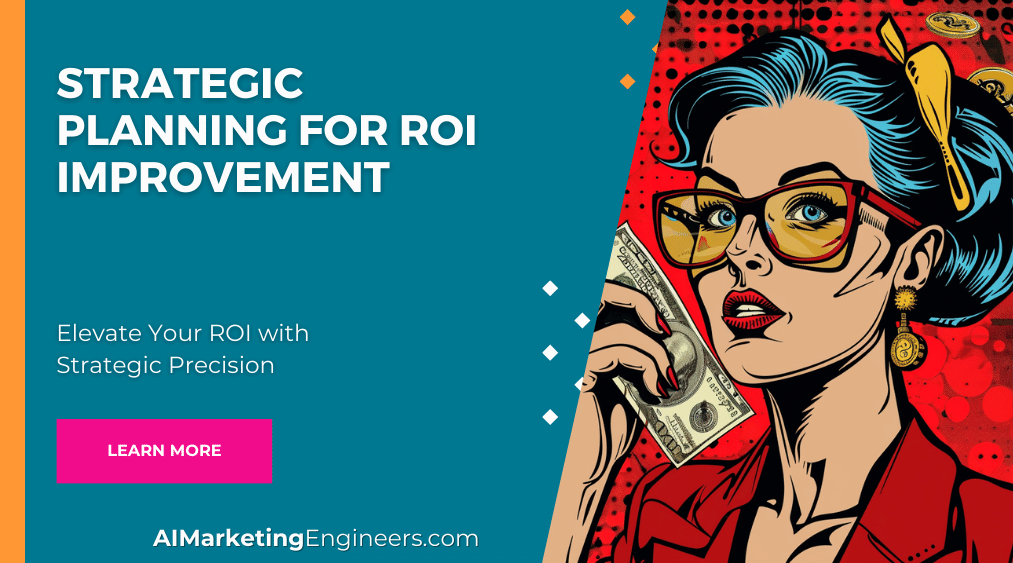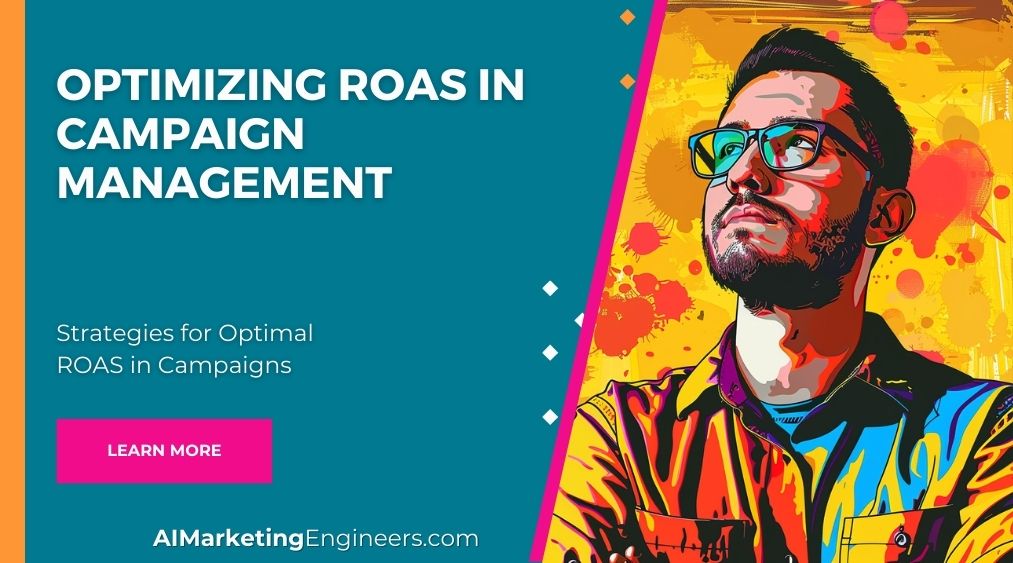Key Takeaways
✅ Alignment of Strategic Priorities with Market Trends: Companies that align their strategic priorities with market trends tend to achieve higher ROI. For example, a survey by PwC found that companies that actively aligned their strategies with digital transformation initiatives reported an average ROI increase of 15%.
✅ Investment in Employee Development: Investing in employee development can lead to significant improvements in ROI. According to a study by the National Center for the Middle Market, companies that invested in employee training and development reported an average increase in ROI of 10%.
✅ Data-Driven Decision Making: Organizations that leverage data analytics in their strategic planning process tend to outperform their peers in terms of ROI. A report by McKinsey & Company found that companies that extensively use data analytics in their decision-making processes are 23% more likely to outperform their competitors in terms of ROI.
Introduction
In the quest for improved Return on Investment (ROI) within marketing, there's a critical journey that every business must embark upon. It's a journey that begins with understanding the current state of affairs and culminates in identifying and segmenting the right audience. Along the way, strategic planning becomes the guiding force that transforms vision into reality. In this article, we explore the key steps in this transformative journey.
Understanding the Current State
Assessing the Current Marketing Strategy
The first step on the road to improved ROI is to take a close look at the current marketing strategy. This introspective exercise is crucial as it provides a baseline against which future improvements can be measured. Assess the effectiveness of existing campaigns, channels, and messaging. Are they delivering the desired results? What's working, and what's not?
The Need for Data Analysis
To truly understand the current state, data analysis becomes your trusted ally. Dive deep into customer behavior, market trends, and the competitive landscape. This data-driven approach uncovers insights that are essential for informed decision making. Tools like Google Analytics, social media analytics, and CRM systems are invaluable for gathering and analyzing data.
Measuring Marketing ROI
At this stage, you'll also want to familiarize yourself with the tools and metrics commonly used for measuring marketing ROI. Metrics like Customer Acquisition Cost (CAC), Customer Lifetime Value (CLV), and Conversion Rate are your compass in assessing the effectiveness of your marketing efforts. The aim is to understand not only the return on your investment but also which specific elements are contributing to that return.
Setting Clear Objectives
Setting SMART Goals
With a clear understanding of the current state, it's time to set sail toward improved ROI by defining objectives. SMART goals - Specific, Measurable, Achievable, Relevant, and Time-bound - are the cornerstone of this process. SMART goals provide clarity and specificity, ensuring that your objectives are both achievable and aligned with your vision.
Aligning Marketing Objectives with Business Goals
Strategic planning is about more than just marketing; it's about aligning marketing objectives with overall business goals. Ask yourself how improving ROI in marketing aligns with broader business objectives. Are you looking to increase revenue, expand market share, or enhance brand loyalty? The answers will shape your marketing objectives.
Audience Identification and Segmentation
Identifying the Target Audience
With objectives in place, it's time to focus on your most valuable asset: your audience. Who are they? What are their preferences, behaviors, and pain points? Audience identification is the cornerstone of personalized marketing, and it begins with thorough research and analysis.
Segmenting for Personalized Marketing
Segmentation takes audience identification to the next level. By dividing your audience into distinct segments based on shared characteristics, you can tailor your marketing strategies to speak directly to their needs and interests. This leads to more effective campaigns, increased engagement, and improved ROI.
The Power of Audience Understanding
Understanding your audience isn't just about delivering more personalized marketing; it's about achieving improved ROI. When you resonate with your audience, you're more likely to convert leads into customers and customers into loyal advocates. The result? A marketing strategy that not only delivers financial outcomes but also builds lasting relationships.
In the journey towards improved ROI, from understanding the current state to audience identification and segmentation, strategic planning becomes the glue that holds it all together. It's the bridge between where you are and where you want to be. By assessing the current marketing strategy, setting SMART objectives, and deeply understanding your audience, you'll pave the way for marketing excellence and financial success. So, let the journey continue, guided by data, fueled by strategy, and driven by the pursuit of improved ROI.
As we navigate the roadmap to improving Return on Investment (ROI) within marketing, we arrive at a crucial juncture: resource allocation. It's the stage where budgets are crafted, decisions are made, and the wheels of strategic planning set in motion. In this article, we delve into the art of resource allocation, the selection of the right marketing channels, and the role of technology and automation in driving ROI improvement.
The Importance of Resource Allocation
Budgeting for Impact
Budgeting isn't just about numbers; it's about strategy. Allocating resources where they can have the most impact is the essence of financial wisdom in marketing. It's about maximizing the return on every marketing dollar spent.
Trade-offs and Decision-Making
Resource allocation necessitates trade-offs. Not all marketing channels and activities are created equal, and decisions must be made about where to invest resources. Considerations include the cost of acquisition, conversion rates, and the potential lifetime value of customers. It's a strategic chess game where every move counts.
Choosing the Right Marketing Channels
Analyzing Marketing Channels
To make informed decisions, it's imperative to analyze different marketing channels - from digital to traditional and everything in between. Each channel has its unique strengths and potential ROI.
Target Audience and Product Fit
Selecting the right marketing channels hinges on understanding your target audience and the product or service you offer. Are your customers active on social media, or do they respond better to direct mail? Does your product benefit from visual advertising, or is it best explained through content marketing? These are the questions that guide channel selection.
Implementing Technology and Automation
The Role of Technology
Technology is the catalyst that propels marketing into the future. It improves efficiency, enhances ROI, and unlocks new possibilities. The tools and platforms available today provide invaluable insights and capabilities.
Automation for Efficiency
In the world of marketing, time is money. Automation plays a pivotal role in executing repetitive tasks, freeing up valuable human resources for strategic thinking. It also collects data at a scale and speed that would be impossible manually.
Data-Driven Decision Making
Technology and automation collect vast amounts of data, but their true power lies in transforming this data into actionable insights. Data-driven decision making becomes the compass that guides marketing efforts towards higher ROI. From personalization to A/B testing, data informs every aspect of strategy.
Resource allocation, choosing the right marketing channels, and implementing technology and automation are the gears that drive ROI improvement within marketing. It's the culmination of strategic planning, where budgets align with objectives, channels resonate with the audience, and technology empowers efficiency.
In a world where marketing is both an art and a science, these elements provide the structure that allows creativity to thrive. They are the strategic underpinnings that ensure every marketing dollar is an investment, not an expense. As we continue the journey towards improved ROI, let's remember that resource allocation isn't just about managing budgets; it's about shaping the future of marketing success.
Embracing Testing and Optimization
The Importance of A/B Testing
A/B testing is the secret sauce of marketing optimization. It involves comparing two versions of a marketing asset, such as an email subject line, landing page, or ad creative, to determine which one performs better. A/B testing is not a one-time affair but a continuous process that drives incremental improvements.
Continuous Testing for Incremental Improvements
Why is continuous testing so vital? Because small changes can lead to significant gains in ROI over time. By testing different elements of your marketing campaigns, you uncover what resonates best with your audience. Over countless iterations, these insights accumulate and compound into substantial improvements.
Monitoring and Adjusting the Strategy
Ongoing Monitoring of Campaigns and Plans
A static marketing strategy is a recipe for stagnation. To achieve and maintain an improved ROI, you must continuously monitor your campaigns and strategic plans. Market conditions change, customer preferences evolve, and competitors adapt. Staying ahead requires vigilance.
The Role of Key Performance Indicators (KPIs)
Key Performance Indicators (KPIs) are the compass by which you navigate the dynamic marketing landscape. They provide tangible metrics to track progress and make informed adjustments. From conversion rates to customer acquisition costs, KPIs offer insights into what's working and what needs tweaking.
Case Studies and Best Practices
Real-World Examples of Success
To illustrate the power of strategic planning for ROI improvement, let's dive into case studies from various industries. These examples showcase best practices and provide valuable insights.
E-commerce: Increasing ROI through Personalization
An e-commerce company leveraged customer data to deliver highly personalized product recommendations. This resulted in a 30% increase in conversion rates and a 20% boost in ROI.
SaaS: Refining Pricing Strategies
A Software as a Service (SaaS) company conducted extensive A/B testing of pricing tiers and plans. By optimizing their pricing structure based on user behavior, they achieved a 15% increase in average deal size and a 25% ROI improvement.
Retail: Harnessing Location-Based Marketing
A retail chain utilized location-based marketing to send targeted offers to nearby customers. This led to a 20% increase in foot traffic, boosting in-store sales and ROI.
Conclusion
In the journey towards improved Return on Investment (ROI) through strategic planning, we've explored a multitude of essential steps and considerations. From understanding the current state and resource allocation to choosing the right marketing channels, implementing technology and automation, and embracing testing and optimization, the path to ROI improvement is multifaceted and dynamic.
To recap the main points:
- Understanding the Current State: Assessing the current marketing strategy and conducting data analysis are foundational steps that provide the baseline for ROI improvement.
- Resource Allocation: Budgeting and allocating resources where they can have the most impact is a strategic imperative. It's about making informed decisions and trade-offs to maximize ROI.
- Choosing the Right Marketing Channels: Analyzing different marketing channels and aligning them with your target audience and product/service offering is key to achieving optimal ROI.
- Implementing Technology and Automation: Technology and automation enhance marketing efficiency, collect valuable data, and enable data-driven decision making.
- Testing and Optimization: Continuous testing and optimization, including A/B testing, lead to incremental improvements in ROI over time.
- Monitoring and Adjusting the Strategy: Ongoing monitoring and the use of Key Performance Indicators (KPIs) are essential to stay responsive to market changes and make informed adjustments.
- Case Studies and Best Practices: Real-world examples highlight successful strategies from various industries, providing valuable insights and best practices.
Approach strategic planning with the mindset of continuous improvement. Embrace data-driven decision making, seize opportunities for optimization, and remain vigilant in monitoring your progress. Remember that ROI improvement is not a destination but a journey, and it's one that rewards those who are willing to adapt, evolve, and persist.
As you navigate this path, may your strategic planning efforts lead to not only improved ROI but also a deeper understanding of your audience, a more efficient use of resources, and a lasting impact on your business's success. In the dynamic world of marketing, the journey is where the true value lies, and the pursuit of excellence is its own reward.












